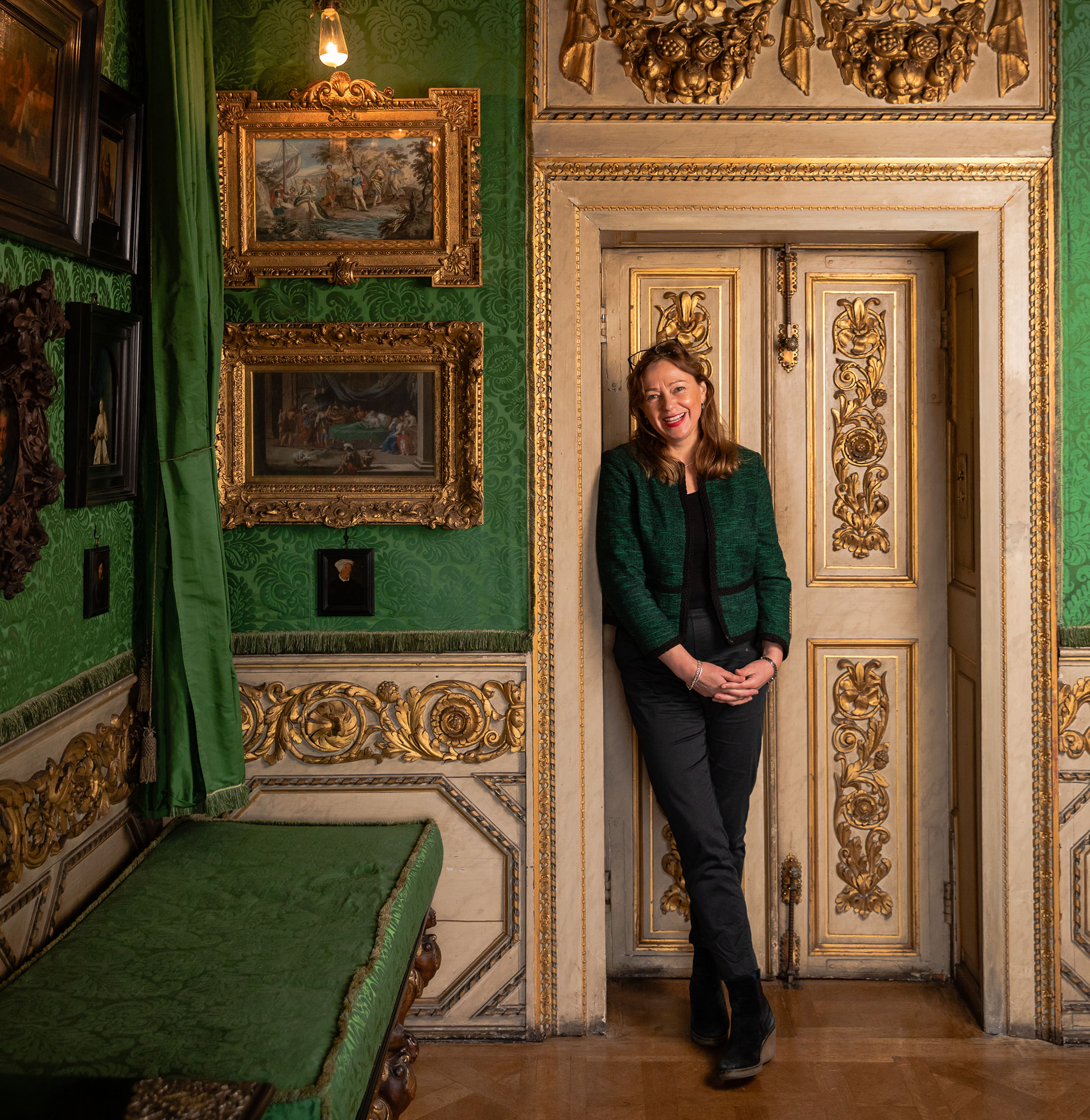A man 'utterly consumed by the forces of love and passion', one of the National Trust's finest treasures
We're taking a look at nine of the greatest objects on display in the National Trust's properties across Britain — this edition examines a painting that is small in size and large in meaning.

![Portrait miniature, tempera on vellum stuck to card extended by another piece of card glued to support the back, presumably to fit the miniature into its frame (oval), A Man consumed by Flames by Isaac Oliver (Rouen c.1565 ? London 1617). Inscribed above his head: Alget qui non ardet (he becomes cold who does not burn). Apparently was written on the back: Earl of Leicester, but Horace Walpole wrote: "But not the least like him, more like Lord Herbert [of Cherbury]." A head-and-shoulders portrait of man with close-cut black hair, spade beard and moustache, turned slightly to the left, gazing at the spectator, surrounded by a circle of flames consuming his antique slate-blue robe and the background. The 'Impresa' device as elucidated by Roy Strong in his work "Portrait as Impresa" suggests it would have been given as a love token. The lover burning up in the flames of his own passion is a familiar symbol in sixteenth-century love poetry. The identification of the portrait miniature with Robert Devereux, 2nd Earl of Essex, KG (1566 - 1601) is also plausible.](https://cdn.mos.cms.futurecdn.net/PHJ4hm5afeRE2mBcS2HAyA.jpg)
The National Trust’s collections are not only vast, but contain objects of astonishing beauty, quality and human interest. To coincide with the Trust’s 125 anniversary, we asked nine senior curators — including national experts in painting and sculpture, textiles, furniture and decorative arts — to choose their favourite object from among those in their care.
A Man Consumed by Flames by Isaac Oliver, about 1610. Watercolour and body colour with gold on vellum, at Ham House, Richmond-upon-Thames, Surrey
Chosen by Tarnya Cooper, curatorial and Collections director
Although we don’t know who this dashing and handsome man is, he has chosen to depict himself as someone utterly consumed by the forces of love and passion, perhaps as a romantic gesture for a lover. A clue is provided just above the sitter’s head, as the motto translated from the Latin reads ‘he becomes cold who does not burn’ (Alget qui non ardet), which perhaps indicates that love of various sorts is an essential part of the human condition.
The picture has been kept in the green closet at Ham House since 1677, and helps us understand how small-scale pictures were displayed in a 17th-century private house.
www.nationaltrust.org.uk/ham-house-and-garden

READ MORE: A week-by-week guide to what to see at the National Trust's properties in 2020

Exquisite houses, the beauty of Nature, and how to get the most from your life, straight to your inbox.
Country Life is unlike any other magazine: the only glossy weekly on the newsstand and the only magazine that has been guest-edited by His Majesty The King not once, but twice. It is a celebration of modern rural life and all its diverse joys and pleasures — that was first published in Queen Victoria's Diamond Jubilee year. Our eclectic mixture of witty and informative content — from the most up-to-date property news and commentary and a coveted glimpse inside some of the UK's best houses and gardens, to gardening, the arts and interior design, written by experts in their field — still cannot be found in print or online, anywhere else.
